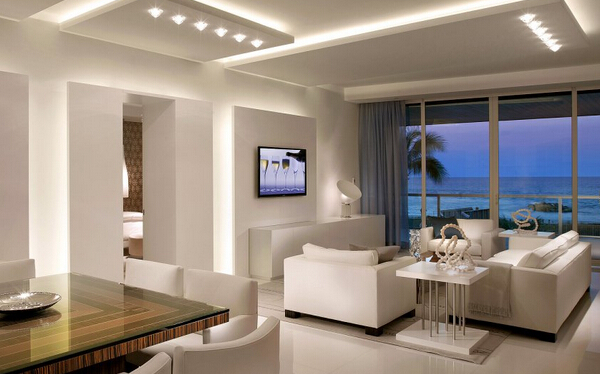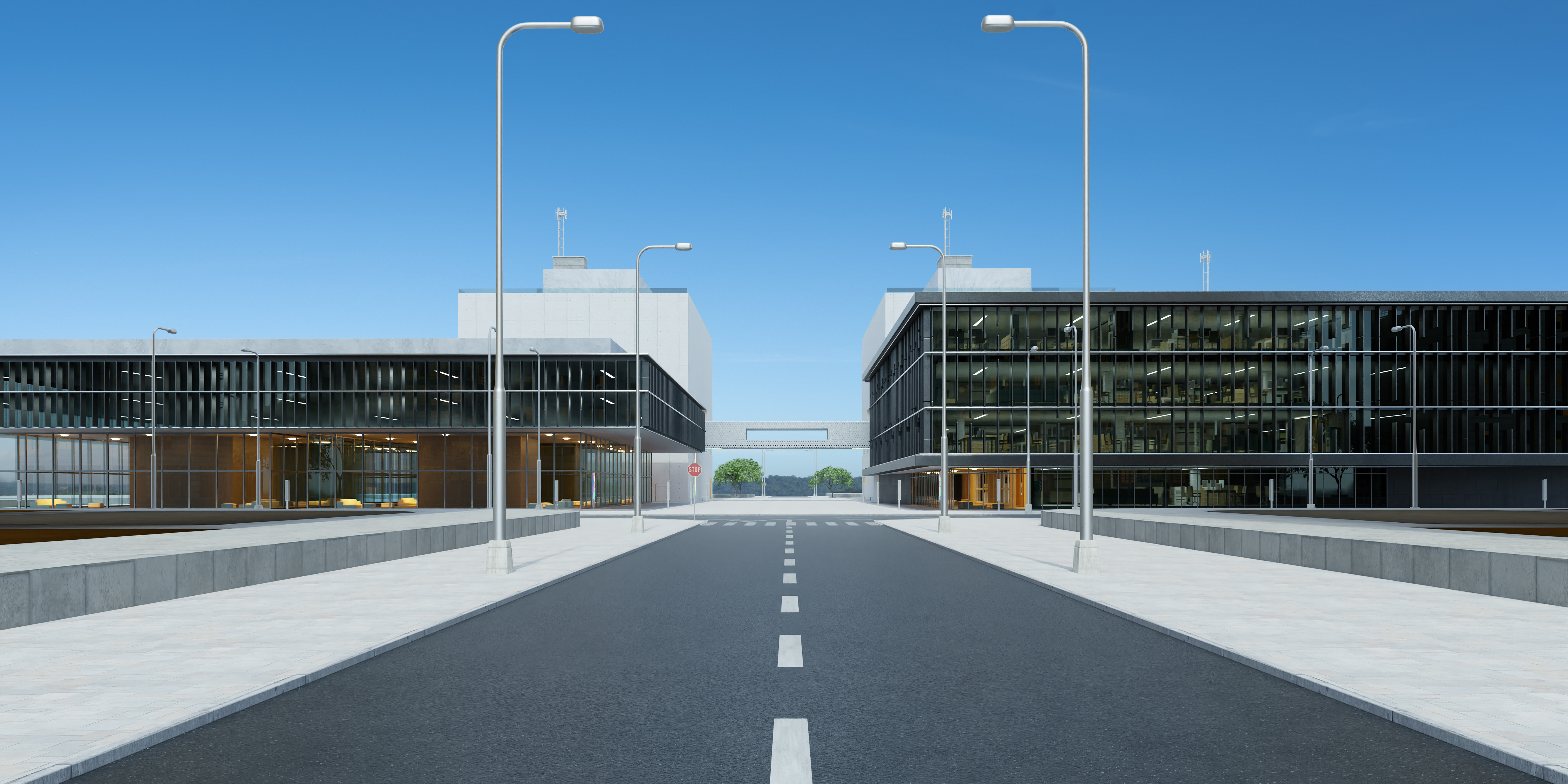Posted by Forbes.com 06/13/2014; http://www.forbes.com/sites/peterdetwiler/2014/06/13/bridgelux-enables-the-led-revolution-from-behind-the-scenes/
LED lighting is a fascinating technology. It’s not like incandescent lighting – where you heat up a filament until it glows (with the inevitable result that you generate 90% heat and relatively little light). It’s not like fluorescent either – where an electric current excites a mercury vapor which ultimately leads the phosphor coating on the lamp tube to glow. No, solid state light emitting diodes are a completely different technology. They are semiconductor devices that produce light as a consequence of an electric current. And unlike incandescents and fluorescents, LED lights are directional – you can focus them in one direction. And you can talk to them.
LED lighting has to do with chips, which makes the design, production, and innovation a completely different game. One of the companies that came to the playing field early was Bridgelux, and they have been innovators since the start. Among other claims to fame in the lighting world, Bridgelux was first to create a mass production process for growing LED chips on silicon substrates – a development that is now coming to market and will lead to significant cost reductions. The company was also a pioneer in developing what is know as ‘Chip-on-Board’ architecture, which serves as the basis for improving light quality and color control, lowering the production cost and time to market for a wide variety of lighting applications.
Image: Bridgelux
Bridgelux has now taken that approach a step further and developed what they call their Vero platform in order to further drive down the cost of LED light (measured in lumens per dollar). The Vero platform also creates increased connectivity and integration capabilities required by the coming growth in smart lighting applications.

Image: Bridgelux – Vero
Bridgelux then sells to original equipment manufacturers (OEMs), who in turn manufacture products that carry somebody else’s brand. So what Bridgelux does is highly leveraged, and their innovations and productivity improvements matter, as society moves to squeeze more value out of every kilowatt-hour of electricity consumed.
I recently spoke with the company’s CEO, Brad Bullington, to try and better understand this highly technical and complicated space, and to elicit a sense of where he sees the industry going. Bullington has been with Bridgelux for four years, and CEO for the last year and a half. He has taken the company through a good deal of change to get where it is today.
Bullington commented that Bridgelux was originally founded to be a capital equipment company in 2002 – they were going to create the tools to develop the wafers and chips necessary for LEDs. They filed some key patents, but eventually came to realize that it might be easier to join the LED fray rather than be a capital equipment company. They soon also realized that if you wanted to beat the incumbent lighting technologies, it was necessary, as Bullington puts it, “to cross over certain price performance levels that will allow new applications to flip to new technologies.”
Part of the challenge of LEDs is the same one that affects other illumination technologies (though here to a lesser degree): the generation of light also creates unwanted heat. Bullington commented that this was the initial technical challenge that had to be addressed.
“What Bridgelux saw in 2007/08 was that if you took a standard LED chip, the requirements at the packaging level in general illumination increased exponentially. You had problems with lighting, heat management and other issues.”
So the company decided to add “value added packaging,” i.e. taking the chips and creating the best layouts or what is know as “array architecture,” to their portfolio. Bridgelux was particularly keen on developing the capability to create high quality light in general illumination, while resolving thermal and power management challenges presented by LEDs.
The other thing Bullington, the former CEO (Bill Watkins), and the rest of the team did was to focus on the gallium nitride (GaN) chip technology. They selected the GaN technology, specifically with 8” silicon substrates, owing to its lower cost points and ease-of-entry into the well established silicon manufacturing universe represented by Intel, Toshiba and others. The infrastructure to build silicon-based technology was already in place. The challenge was that the gallium nitride application to silicon posed specific technical hurdles.
“Getting gallium nitride to work on silicon substrates had been a challenge for 20 years, and people thought that was unachievable. We were initially viewed as heretics for drawing strong analogies between LEDs and mainstream semiconductors. As part of that playbook, we partnered with Toshiba to further commercialize GaN-on-Si for solid state lighting.”
In January 2012, the two companies signed a partnership agreement to commercialize the GaN-on-Silicon LED wafers. By October, the partnership announced the achievement of ‘world class’ performance of GaN-on-silicon wafers.
In 2013, the two companies deepened that strategic relationship, and announced a manufacturing deal that would position Toshiba as the manufacturer for GaN-on-silicon based LED chips, while Bridgelux would focus on packaging. Toshiba has produced some GaN-on-silicon devices, but mass production won’t start until later this year.
Looking back, Bullington comments on the evolution of the LED lighting technology as happening in three distinct phases.
Phase One was about getting the core technology right and getting the price points down where they became attractive to customers.
“Until recently, chips weren’t efficient enough and even when they were, they cost too much. All that changed three to four years ago. There is now a battle for that core chip technology, where the total cost of ownership paybacks are now in the sub three-year to sub two-year range.”
Phase Two (the industry is at the latter end of this phase) addressed the ‘packaging,’ and creating the architecture and chip alignment to optimize performance.
“Packaging technology became important. The packages didn’t initially contemplate all the challenges around thermal and optical management…now packaging became a bigger deal. There were 100 different ways to package, and there were lots of competitors.”
Phase Three is what Bullington refers to as ‘the activation phase of light.’
“The core technology is powerful. The ability to be productive has gotten to the point where swapping out for LEDs is a no brainer. The opportunity now is to start catalyzing and activating light. That could mean different types of dimming, daylight harvesting, – a huge catalyst of savings. If you could swap out all lights you could see a reduction of 35% of lighting consumed. With basic connectivity and dimming you could increase efficiency again by another 30-50%.”
After that, it gets really fun and creative. Because with LEDs, you can do things with color and connectivity that you simply cannot do with a light source that is not solid state.
“Then you get more nuanced controls, and with a feedback loop, you can think about more controlled applications in retail. You could talk about a 10% reduction in overall energy cost in a supermarket. Perhaps you could boost profit margins. But if you add sensing technology you could start to control lights. If somebody gets closer to display, for example, you could bump up the lumens and change the colors.”
Given the rapid state of innovation and evolution in the LED space, where does Bullington see this going? First, he sees continued improvement in cost-effectiveness for the consumer, that in some ways have hurt the bottom lines of the LED players.
The paradox is that the massive compression of cost that has enabled that. We’ve seen a huge reduction in component costs – chip plus package; those prices even at the high end have fallen 35-50% a year for the last three years. That’s bad for margins, and good for market penetration. You will see market consolidation.
Bullington also expects LED market penetration to continue rapidly, while the applications of lighting technology for humans will evolve.
“We view 25-30 billion sockets in the world today, and every one should be connected over the next decade. It’s an incredible network. You could have a physical network tracking capability, where products reside. There are applications around spectral tuning and behavioral influencing. For example, they use red LEDs on nuclear submarines, because various spectra help people sleep or stay alert, or forestall depressions.
What’s exciting is the game moving forward…I think the next phase is, you can start to talk the OEMs into the idea of starting to integrate wireless controls or to spectrally tune, or have a health and wireless sensor so you can predict failure. I’ve seen a change in their behavior – that tradeoff is starting to happen.”
The CEO of Bridgelux is keenly aware that the industry and his company sit in a critical position, at a pivotal time in the evolution of lighting technology. He is intent on having Bridgelux play a key catalyst role in this change.
“Disruptive technologies only come around so often – the way you define the way things pass this test or don’t is seeing if the underlying value proposition of the new technology is radically better than what you are replacing. If you just look at energy savings, maintenance savings – yes, solid state is disruptive. The second criteria are whether there is neat science that gets productized. Is there a way this gets productized radically differently? This will increase as you integrate more features and functions on board…We look at this as a technology industry, not as a lighting industry.”




